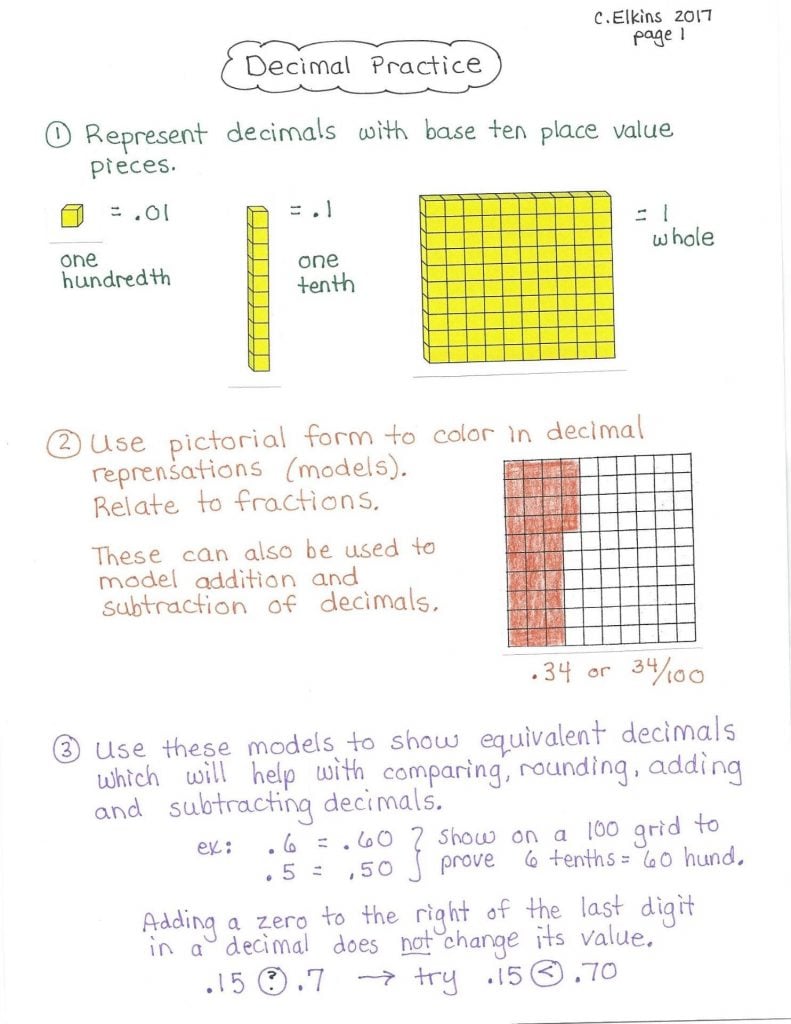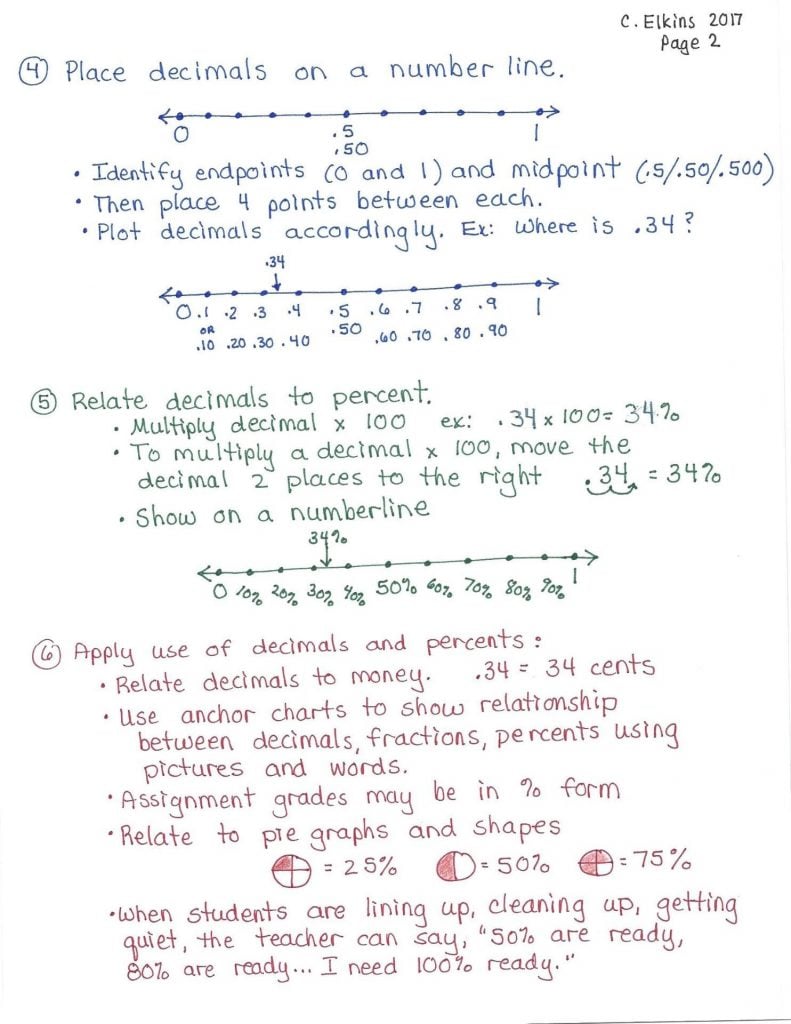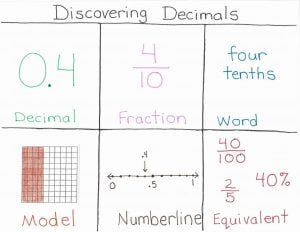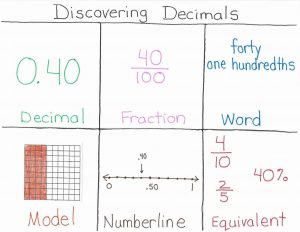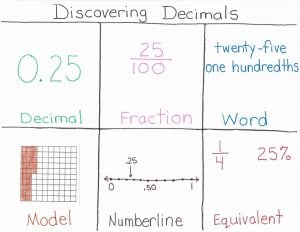by C. Elkins, OK Math and Reading Lady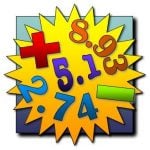
Number sense regarding decimals usually starts with fourth grade and continues with more complex operations involving decimals in fifth grade and beyond. It is this extension of the place value system and then relating them to fractions and percentages that often perplex our students (and the teachers, too)! Read ahead to get your freebies (Decimal practice notes, anchor charts, and Discovering Decimals Number of the Day / Game activity). I have revised this previous post and included some more freebies below.
Students must understand this base-ten value system extends in both directions — between any two values the 10-to-1 ratio remains the same. When using place value blocks in primary grades, students recognize the 100 square as 100, the tens strip as 10, and the units cube as 1. Then with decimals, we ask them to reverse their thinking as the 100 square represents 1 whole, the tens strip represents a tenth, and the unit cube represents a hundredth. This may take repeated practice to make the shift in thinking — but don’t leave it out. Remember the progression from concrete (hands-on) to pictorial to abstract is heavily grounded in research. Students will likely gain better understanding of decimals by beginning with concrete and pictorial representations.
I am sharing my decimal practice notes, which highlight some of the basic concepts to consider when teaching. Pronouncing the names for the decimals is not in these notes, but be sure to emphasize correct pronunciation — .34 is not “point three four.” It is “thirty-four hundredths.” Use the word and for the decimal point when combining with a whole number. Example: 25.34 is pronounced “Twenty-five and thirty-four hundredths.” I know as adults we often use the term “point,” but we need to model correct academic language when teaching. You can get also the pdf version of these notes by clicking here: Decimal practice teaching notes.
Anchor charts are excellent ways to highlight strategies in pictorial form. Here are some examples of anchor charts to help students relate decimals to fractions, location on a number line, word form, and equivalencies. Get the free pdf version here: Discovering decimals anchor charts. It includes a blank form to create your own.
In this model, I chose the 1000 cube to model 356 thousandths. It’s a little tricky – be sure to see that the 300 part is shaded all the way (front and top – picture 3 slices of 100), the 50 part is shaded (front and half the top – picture half of a 100 slice), and the 6 part is just shaded in the front (picture 6 individual parts). The entire cube would represent 1 whole.
 Here’s a matching activity / game in which students match decimal to fraction, word form, expanded form, money, and pictorial form. Included is a blank page so you can make your own or have students take notes. Click here for the FREE activity: Decimal, Fraction, & Money Match
Here’s a matching activity / game in which students match decimal to fraction, word form, expanded form, money, and pictorial form. Included is a blank page so you can make your own or have students take notes. Click here for the FREE activity: Decimal, Fraction, & Money Match
Another resource ($2.50 at TPT from Joanne Miller) to help students relate the decimal to the pictorial form:Decimal 100 grid Scoot
Finally, below is an activity to practice or reinforce decimal concepts. The page showing can be used as a “Number of the Day” practice. I also created a game using this model, and the whole packet is included in this free pdf. Click here: Discovering Decimals number of the day and game
For more teaching help (videos and interactive models) for decimals, check out the following 3 free resources. These are also listed in my resources section of the blog (top black bar):
As always, you are welcome to share your decimal discovery ideas. Just click the comment box speech bubble at the top of the article or the comment box at the end of the article.
